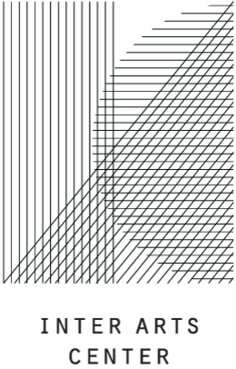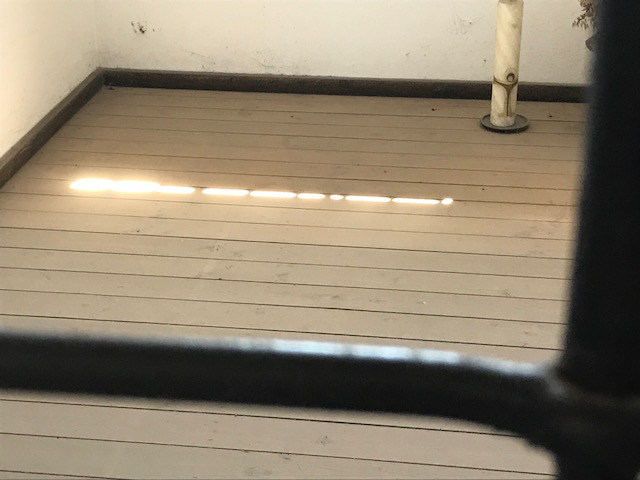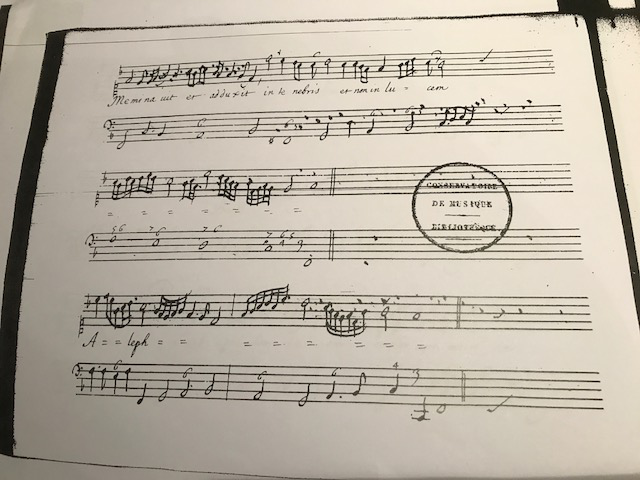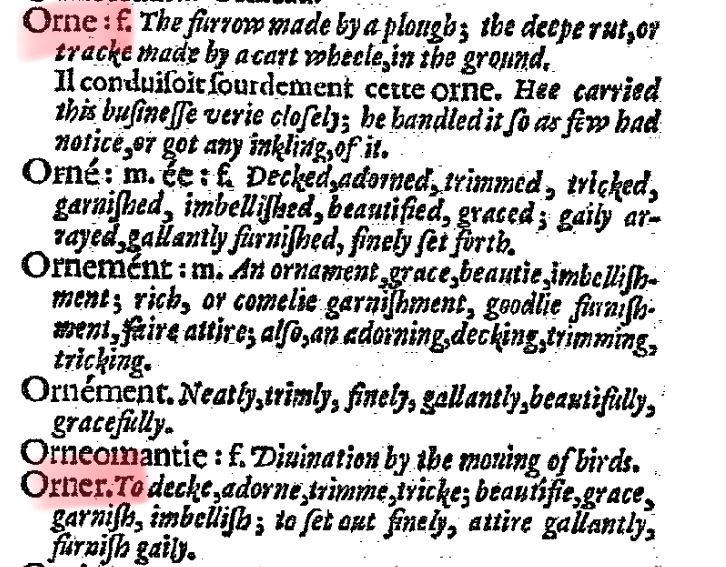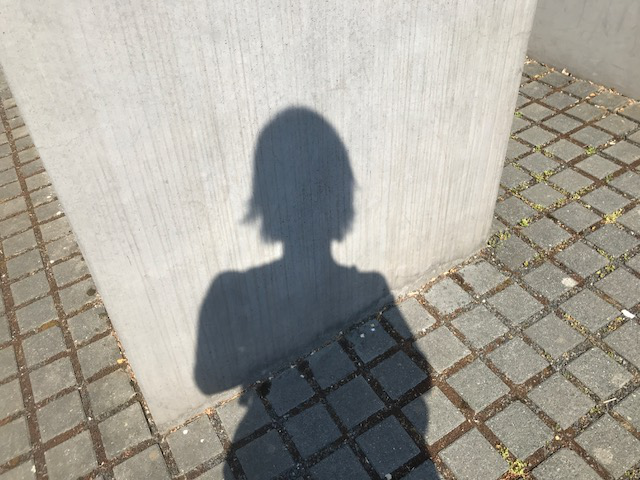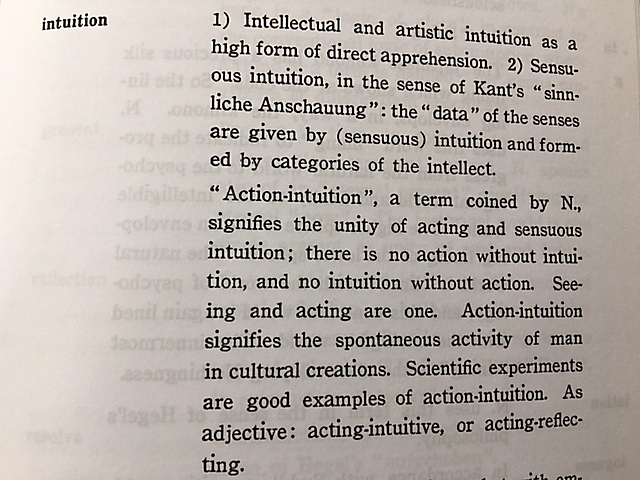is inviting you to curiously move along into an other reality.Into a score,handwritten
You are invited to walk into this je-ne-sais-quoi of the score...
Exploring
it
as part of our everyday breath...
Taking
a good look
at a specific detail...
Spiralling
into its very centre,
Starting
to cut
and to chop
it into parts...
Searching for every possible aspect of any-thing-in-itself...
Touching its surface and finding it all tremendously curious...
preparing
it is like making music
being in dialogue
with another voice
encountering
sighing
listening
making sound
dissonancing
dancing
longing...
we closed our eyes and tried to listen with our bodies
we stood there back to back
waiting for the other to fill the longs with air that would turn into sound...
Touching(Barad 2018)
the
transcribing
hand,
Imagining
"the sensuality of the flesh,
and exchange of warmth,
a feeling of preasure,
a proximity of otherness
that brings the other nearly as close as oneself.
Perhaps closer. [...] an uncanny sense of the otherness of oneself.
A literal holding oneself at a distance in the sensation of contact, the greeting of a stranger. [...]
So much happens in a touch: an infinity of others - other beings, other spaces, other times - are aroused." (Barad 2012:1,see also Boehler 2010] see also).
Touching
Is
central to
17th century vocal performance. Touching (Derrida 2005) while voicing. Observing and expressing the wonders of living. It was a time when voice was considered being a symbol of NOTHINGNESS
Departing from an historical source means in this research entering a limitless spacetime.
A walk without an end.
is an extension
of the factual and the physical.
the material, the existing,
the magical, the extreme
Nothingness
as paradox and wonder
meaning
Every
thing
and
No
thing...
The French
at the time didn’t care much
for that kind of Nothingness.
They preferred the fluidity of a continuous touching.
A glistering ongoing ornamenting movement towards
je-ne-sais-quoi.
No beginning.
No end.
But a
cultivated brilliance, shimmering,
wondering.
You are invited to walk into this je-ne-sais-quoi of the score exploring it as part of our everyday breath.
"And rather than offering a straight narrative, a linear unfolding of a particular storyline, it experiments with montage and fragmentary writing, diffractively reading insights through one another, allowing the reader to explore various cristalline structures that solidify, if only momentarily in the breaking of continuity."
The ornamenting voicing keeps moving through a fluid landscape. Pointing towards a context - more rich than the actual score itself...
This score tells
about pain
and sorrow.
About the fall
of a city.
about suffering and madness.
a lamentation.
a meditation.
a lesson in the shadows of death
"The true self, the self in its most concrete immediacy, then, is an acting self (kōiteki jiko) partaking in the world's poiēsis (production). Instead of being de-worlded subjects observing the world from without, we are radically implaced within the world's dynamism."
"We are both spectators and actors in the unfolding of the great play of life"
"Thinking already means acting"
"We see things by acting on them, creating them, giving them form."
"Intuition or seeing is never just the passivity or pure perception. Instead it entails the dynamism of our acting in the world, our active engagement with our surrounding. seeing things, that is, understanding them in view of what they are, aleardy implies our acting on them, giving them form, within the context of the given historical world. It involves the active structuring of what we see, rendering it into forms."
"We act on things while being acted on by them. We determine the things that are determining us; we shape the things around us as we ourselves are being shaped. So we see by acting and act by seeing; they generate eachother"
Now, let us diffract the score through the words of Barad
who continues to write
about the very point of encounter:
While trying to get deeper into the wonders of VOCAL Nothingness I learned about the Japanese Philosopher Kitaro Nishida and the Kyoto School. I learned about a common interest in theorizing/practicing the art of Nothingness. In my research I am currently engaging with Nothinda's theory as a means and a tool for translating abstract vocality into meaning-making material(Uehara 2017).
Practicing and theorizing becomes a diffracted way of touching the otherness of the self.
A continuum of doings:
entering, making, taking,
spiralling, starting, searching,
finding, opening, resting,
reflecting, movng, keeping,
leaving, flowing, walking,
exploring, shining, telling, demanding, beaming, informing, coming, confirming, caring, allowing,
orna/menting…
fragmented words of relevant situated meanings were explored while the opera genre was created in the mid 17th century. Overvocalisation.
Nothingness.
The female voice.
(Calcagno 2004, Belgrano 2011)
Fragments contributing to a shift in the use of voices in an oral traditon of performing.
Voicing was not only about making voice, but perhaps even more about listing to the other while making voice sound and come alive. Irrational sounding. Sounding that became singing. To the world around. To the vaguness of everythings creation gesturing its right to act, to move, to be and to become.
is vague,
not-yet-explained
"In summary, according to Barad, the in/deteminate principle is the condition of possibility and the condition of materialization of a phenomenon. She writes, 'in/determinacy is not the state of a thing, but an unending dynamism' (2012b, 12). Such ontological in/determinacy is a 'radical openness, an infinity of possibilities', which is what she calls 'the core of mattering' (2012b, 18)".(Mehrabi 2016:225)
It is the term radical openness I am searching for. An openness that includes that which-is-yet-to-be-known. If you close the doors, vagueness is excluded, everything can be explained, clearity is a keyword. But if we let doors be open... that-which-is-not-yet-known can appear at any moment. Here and now. The orna/mentor is ready. stretching out an open hand into the air. Inviting through a gesture of love. Universal love. Love for the otherness... What is vague can be met in its vagueness. What is not-yet-clear can become reconfigured.
Slowly.
Fearful to make too much sound,
A sound that mingles with bodies.
Piled up all around inside the acoustics.
Death.
Difficult to find air.
Impossible to get enough.
Impossible to grasp.
Real is real and not real.
Paradoxes.
Here and now all is clean.
Hear and now all is death.
No life. No peace. No thing to trust.
Only Death.
White walls.
Bended ceilings.
Like in a sacred place.
But this is hell.
Sacred hell.
Hell and Death.
All there is to know is death.
Death and hope.
Hope since time is now.
"for Nishida, the embedded, world-engaged human body is not simply the sum of its biological parts or even its physical capacities. Rather, it is a fluid and an 'open-ended' functional structure', as he puts it, which both penetrates and is penetrated by the world in which it moves and acts. This 'world' includes both the body's immediate biological environments as well as the more encompassing cultural and historical contexts that contour our actions and self-understanding. 'Acting-intuition' for Nishida thus captures the active-passive circuit of relatedness through which the body both enters into and receives its world. Importantly, it can be cultivated such that we realize a nondual or 'pure' (Nishida 1990) experience of the world."
Let me conclude (and repeat):
in this exposition I have written
The singing orna/mentor's path is ir/rational, allowing curiosity to guide. What's left in the orna/mentor's footsteps is a trace being crystallized and clearly visible. The dots that were ahead, they have become a firm line behind. The orna (read as: urn, pot or thing-in-itself) has been cared for by a mentor's mind and doings. The orna/mentoring hand. The vocal caring has created endless variations of sounds-in-themselves: ornamented versions of the original. The doings of the orna/mentor are original and can never be made the same. The effect can be read as a translation of one doing of another doing of another doing. Creating multiple understandings/narratives/fabulations/doings based on a simple original doing...
Knowing goes beyond here, now and then. It is the moment when two pair of eyes meet. Trust is there. Even if only for a minute. Sound is visually translated into touch and into meaning. It might for some be a moment of forever. A moment to care for and to bring out in hard times. When two pair of eyes meet, they know. Doubt doesn't exist. To pay attention to the moment between two pair of eyes "is to catch the world in the act, like riding the cusp of a wave ever on the point of breaking"1. It is to experience yet another body growing out of a gaze. A structure that holds all eyes and all bodies within and eternally spilling it all out. It is a body claiming any paradox to be real and filled with life-force. It is a poetic materiality, a poem, a song. This moment is an extention of life and all realtions there could ever be.
SO WHAT?
As a singing academic I am departing with a score in my hand and my voice ready to lead. Practice-led or performative research might be the identification of this artistic practice. In my work I conscious about trying to keep the sensuous experience that I always strive for as a singer. My intention is to touch and to be touched – as a singer / as an artistic researcher / as a caring being.I place my work in diffractive and artistic methodologies. I search for ways to translate the movement from silence to voicing to existential meaning-making. I turn to whatever idea, fragment, theories, figures coming in my way. Staying with the situatedness of making sense out of nonsense. May it be poetic...
A performance act in itself.
A poetics of singing as knowing.
A feeling of having overcome fears and boundaries that previously interfered with me vocal doings.
Ornamentation as a practice has allowed me to investigate ways of arriving at a deeper understandings of meaning making.
Allowing
me to encounter
soundrituals
and
soundscapes
halfway,and fully relating to the
every-day-living.
